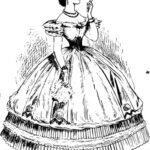
In the short story by William Faulkner, A Rose for Emily, there is a significant connection between the character of Emily and the house in which she dwells. In many ways, the plot and Emily’s own evolvement as a round character are portrayed mainly by the function of the house in the setting. In this essay, I will illustrate how this connection is expressed in the text and what one may deduce from it.
The house is mentioned already in the first paragraph of the story, and it additionally being comprehensively depicted in the second paragraph. The initial exhaustive attention the house receives might suggest to the reader that it holds a strong symbolic significance right from the beginning.
By carrying both literal and figurative meanings, the description of the house can unfold many details about Emily’s domestic surroundings and her personality traits as well. The house’s portrayal is divided into two parts – its appearance in the past and how it looks today when the story’s narrative takes place. While in the past it appeared eminent, distinguished and situated in a respectable street, today it decays, somewhat isolated and the entire surrounding neighborhood became unsightly. Hence, this description of the house can characterize Emily herself, too – once, she was a dignified woman in town, but throughout the course of time, both her physical appearance and mental state deteriorate until she becomes detached from the town’s community.
In the second chapter, the house represents an important decision and action that Emily takes to which the reader is not exposed yet in the syuzhet. The story’s narrator recounts that after a certain stench rises from Emily’s house, four people disguised as burglars sprinkle lime into her house to eliminate that odor. Nobody in town suspects Emily at this point, whereas Judge Stevens, who sends the four faux-burglars, ascribes the smell to some dead animal. However, the real cause of the smell is the rotting body of Homer, whom Emily murders with poison. Therefore, the bad smell from Emily’s house also underlines Emily’s twisted inner world figuratively.
The reader can additionally learn from the house about Emily’s gradual self-seclusion process. In the fourth chapter, it is revealed that the door of the house gets opened only a few times when Emily is in her forties, and since then, it remains closed until her death. The main entrance of the house illustrates the level of Emily’s openness to society (or lack thereof), and when it ultimately shuts down for the last time, it reflects on Emily’s detachment from the outer world. The reader can also witness Emily’s insistence on remaining isolated through another kernel event that revolves around the house – when Emily refuses to attach a mailbox to her house. In this case, a mailbox attached to the house symbolizes a link to society, an unwanted wish of Emily.
When considering that the story is not being narrated by Emily herself and does not divulge any of her internal contemplations, the critical function of the house as part of the setting is to assist in portraying Emily’s character, and furthermore, many of the plot’s most kernel events are associated with the house similarly.



